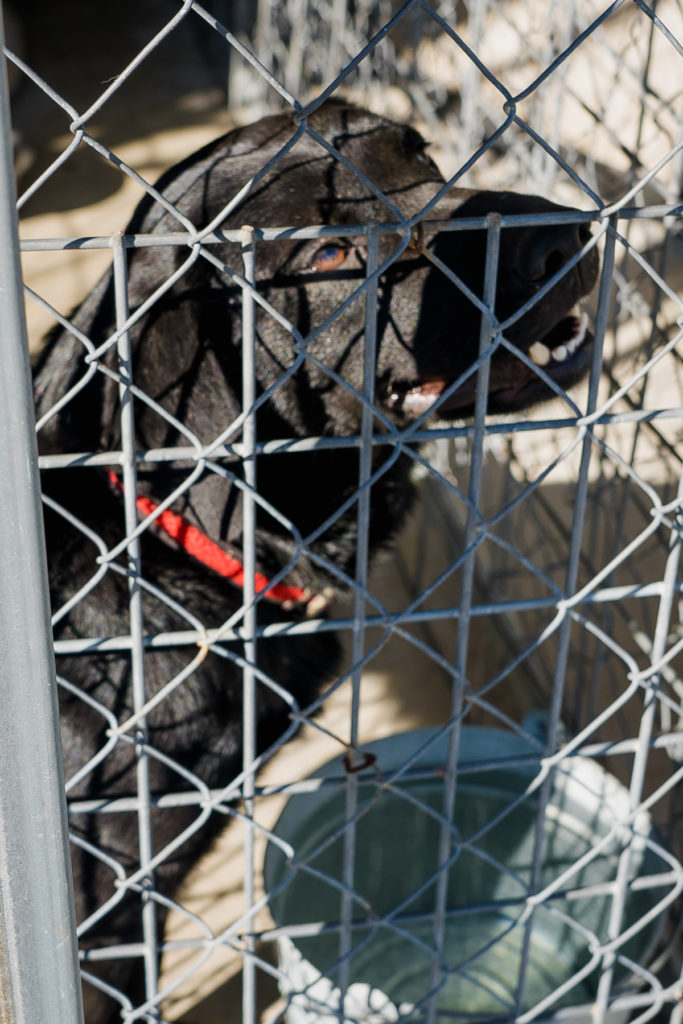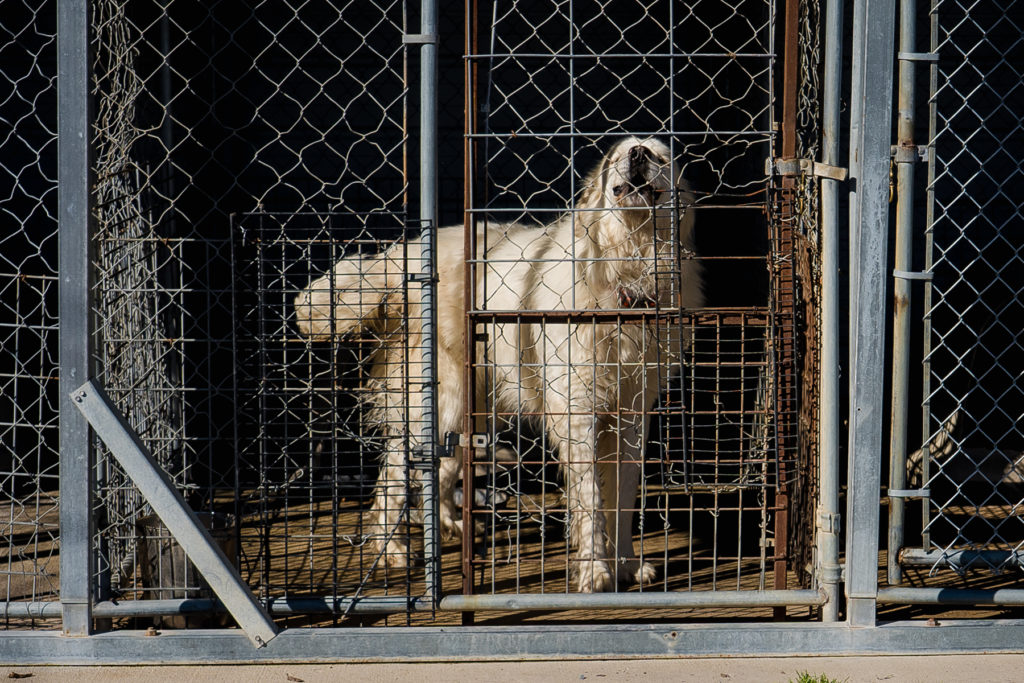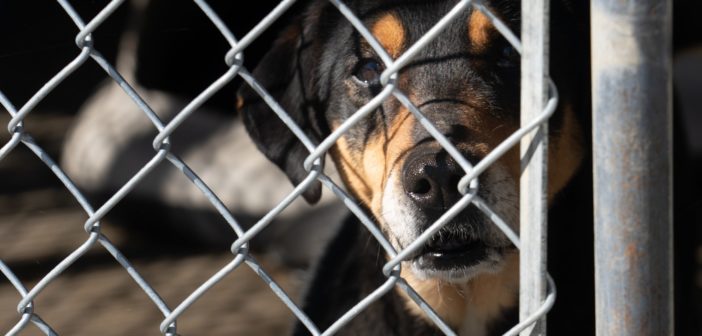“If people could just see this,” I said to Nancy, the photographer standing beside me on a sweltering day in a dog pound in western Tennessee, “they wouldn’t believe it.”
Nancy snapped picture after picture of the full kennels, the chain link twisted and patched with rusted wire. I knelt down in front a chocolate lab, who tentatively licked the treat I held through the fence. His elbows were raw from the concrete floor, and he panted in the heat. The late afternoon sunshine blasted into the kennels, but I wondered how the dogs fared during a Tennessee winter, exposed to the elements as they were.

This was a pound in the truest sense of the word. These dogs would remain in the kennels for a few weeks until they were reclaimed by an owner (a rare occurrence) or taken to the local vet to be destroyed. The Animal Control Officer explained that he was too old to walk the dogs or to round them up if he allowed them to be loose in the enclosed yard. Instead, he simply sprayed out the kennels with a high power hose, with the dogs still inside. The waste was pushed out the back of the kennel into a trough. This process was the same reason why the dogs weren’t allowed any kind of toys or bedding. “It would just clog up the drainage system,” he explained matter-of-factly.
We walked down the row, looking at the dogs, many lab mixes and hound mixes, a litter of boxer puppies, but no pitbulls, which surprised me. The pitbulls, we learned, were kept in another building behind the kennels which was not open to the public. Like a few other counties in Tennessee, it was against the law (due to breed specific legislation) to adopt a pitbull.
I asked if any rescue organizations ever came in to take animals, and he said it happened sometimes, but not often. It was a Thursday, and the pound was full, so I asked what would happen if more dogs came in over the weekend. Shelter numbers typically rise substantially over the weekend. He shrugged and said he’d take one or two over to the vet. “To be killed?” I asked. He frowned at me and said, “To be euthanized.” I pressed him as to which of the dogs would be next. I knew we couldn’t take any that day in our rental car, but I was ready to send out a call to the rescues in the area.

He pointed to a purebred Great Pyrenees and explained that he was turned in by his owner. “He’s a sweet dog, but nobody’s gonna come for him.” He told us that the dog’s family had him for four years but had recently had a baby, who the dog had growled at. The other dog next on the list was an older black lab mix. The ACO claimed the dog had growled at him when he cleaned his kennel.
I bit my tongue and didn’t say what I was thinking, which was, “I’d growl at you too if you turned a high-power hose on me.”
That was just one of the nearly fifty visits I have made, often in the company of photographer Nancy Slattery. Together we have traveled to seven southern states and met countless Animal Control Officers, dogcatchers, rescue advocates, and shelter directors. As I listen to the stories and take notes, hoping I will be able to tell them again clearly and powerfully, Nancy snaps thousands of pictures. We’ve published the stories and pictures in magazine and newspaper articles, on websites and blogs, and in my book, One Hundred Dogs & Counting: One Woman, Ten Thousand Miles, and a Journey Into the Heart of Shelters and Rescues (Pegasus Books, 2020).
Together we founded an initiative called Who Will Let the Dogs Out to raise awareness and resources for homeless dogs and the heroes who fight for them. I often say, “This problem doesn’t exist because people don’t care, but because they don’t know.” I believe this with all my heart. This is a dog-loving country and if people knew what was going on in dog pounds like the one we visited that day, I am certain they would not stand for it. We have strived to tell them every which way we can. And now, finally, we have a chance to not just tell them, but show them.
Together with Farnival Films, we are producing the film Amber’s Halfway Home, which will tell the story of just one day rescuing 17 dogs in the pounds of western Tennessee. We are excited to show people the situation, and hopeful they will be inspired by Amber and the other dogs they meet to work for change, not just in Tennessee, but everywhere dogs are suffering and dying in our shelters and dog pounds.
Stories are powerful and it’s time to write a new one. To learn more or to find out how you can get involved in bringing change, visit WhoWillLettheDogsOut.org.
Featured image: a dog seen on the visit to a western Tennessee pound described above. Image credit Nancy Slattery.





